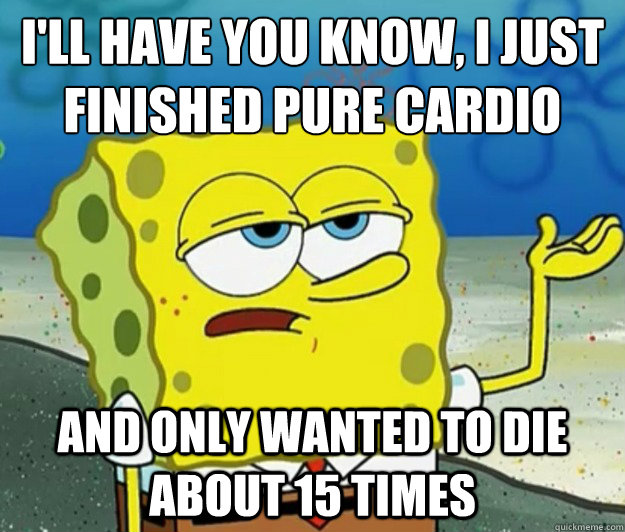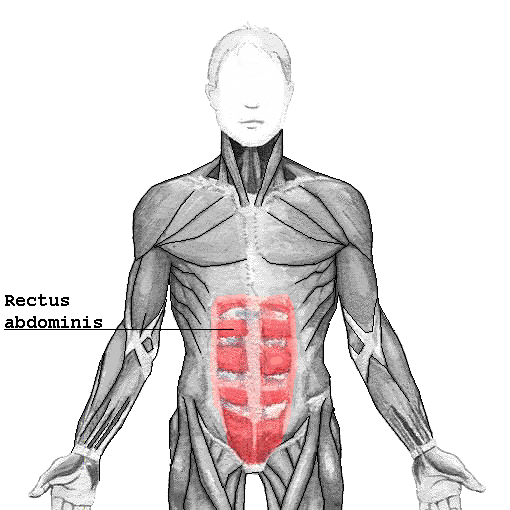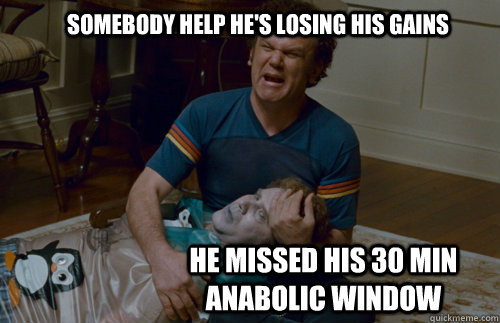After covering protein, I decided to write my next article
on carbohydrates. Carbohydrates are a misunderstood macronutrient in the
fitness industry. It’s quite alarming how many people think they are insulin resistant or can’t tolerate
carbs. This article will discuss everything you need to know about what a
carbohydrate is, how it impacts you, and how you can use them for reaching optimal
performance and body composition.
First, a couple of terms to define so I don’t have to do it later in the
article:
Insulin: Insulin
is the “storage” hormone of the body. When you eat, specifically carbohydrates,
and protein to an extent, your pancreas releases insulin. Cells in the body,
both fat and muscle, can absorb the sugar when insulin is released.
Insulin Sensitivity/Resistance:
Insulin sensitivity and resistance is the relationship between how much insulin
needs to be released to store and dispose of a certain amount of glucose. You
are insulin sensitive if your body releases a small amount of insulin for a
certain amount of blood glucose. You are insulin resistant if your body
releases a lot of insulin for that certain amount of blood glucose. Insulin
sensitive people are those who are generally leaner and healthier, and insulin
resistance is for those who cannot handle blood sugar well. Type II diabetics
are the extreme case of insulin resistance. The level of your insulin
sensitivity has to do with body composition, genetics, and activity level.
What are
carbohydrates?
Carbs are organic molecules in the body that are broken down
into glucose (sugar). Carbs are broken down into two categories: Simple and
Complex Carbohydrates. Simple carbs are smaller, as they’re either one or two
molecules linked together. Some forms of simple carbohydrates are glucose and
fructose. Complex carbs are larger, and have more than two sugar molecules
linked together.
No matter what kind of carbohydrate you consume, it
ultimately is broken down into sugar, and then it is absorbed by the body. It
doesn’t matter if its Skittles or high fiber oatmeal, it will be broken down as
sugar. The difference between these food sources is their digestion speed. Low
glycemic carbohydrates are digested slowly, and do not spike insulin. Simple
carbohydrates are digested rapidly and lead to a larger insulin spike.
What do carbohydrates
do in the body?
Carbs are the primary source of immediate energy for the
body, and carbs and glucose also help the brain and body function normally.
Where walking is solely supported by fat oxidation, sprints, jump rope, or
other types of vigorous activities primarily rely on carbohydrates to fuel the
energy for the body.
Glycemic Wha??
The glycemic index is a measure of how quickly blood sugar
levels rise after eating. Pure glucose, or sugar, has a glycemic index of 100
as it gives the quickest increase in blood sugar after consumption.
Low Glycemic Index (GI) foods are foods that have a GI of 55
or less. These foods include beans, peanuts, oats, most vegetables, brown rice,
and most sweet fruits, like strawberries, mangoes, and peaches.
Medium GI carbohydrates have a GI of 56-69. These foods
include boiled potatoes, bananas, and pita bread.
High GI carbohydrates have a GI of 70 and higher. These
foods raise blood sugar the most. Some examples of high GI carbs are white
bread, white bagels, glucose, and pretzels.
All of the foods included in the lists above are just quick
examples I thought of. You can find the Glycemic Index of any food by Googling
it.
Insulin on Fat
Burning
Insulin again is the storage hormone. When insulin is
elevated, lipolysis is essentially stopped. Lipolysis is the process of
triglycerides (fats) being broken down from fat tissue for eventual oxidation
(burning of fat). Lipogenesis on the other hand is the process of storing
energy into these fat cells. Since insulin is a storage hormone, it promotes
lipogenesis and the uptake of fatty acids into fat cells. It also, promotes
storage of nutrients into the muscle cell as well. Moral of the story is: when
insulin is elevated, lipolysis is “turned off” for easier terms, and thus fat
oxidation cannot take place.
What does this mean?
Well, low glycemic carbohydrates will elicit the smallest
insulin responses. High GI carbs will elicit the highest insulin responses.
When insulin is raised, it will stay elevated until all the sugar in the blood
is disposed of into cells. Sooooo, low glycemic carbs will allow for a quicker
drop of insulin, and back to lipolysis. For those who are insulin resistant,
picking lower glycemic carbs should be a priority.
While low glycemic carbs are usually better for body composition
because it doesn’t result in large insulin responses, there are times where an
insulin spike can be beneficial. Insulin is a double edged sword. While raising
it all willy nilly can result in lessened fat oxidation and fat storage,
spiking it after a workout can help drive nutrients into the muscle cells since
they’re in a state where they are very susceptible to nutrient uptake.
So someone who is insulin resistant, and releases too much
insulin in response to carbohydrate consumption, can have trouble staying lean
with high carbohydrate consumption. For those who are insulin sensitive, higher
carbohydrate diets can be used and won’t usually have adverse effects on body
composition.
Please note this: YOU CAN ONLY GET FAT WHEN YOU’RE IN A
CALORIC SURPLUS. You can spike insulin all you want, but if you’re under eating
and there’s not extra energy (calories) to be stored, you cannot physically
gain fat. Again, “calories in” in relation to “calories out” will result in
weight gain or weight loss. This is where the whole “If It Fits Your Macros”
diet comes into play: if you’re tracking your calories and macros, and a bag of
skittles can fit into what you eat for the day, then have that bag of skittles.
How do I tell if I am
insulin resistant or insulin sensitive?
There are a few ways to tell if you are insulin sensitive or
resistant. One way is to purchase a blood glucose meter and do a test. I’m not
going to explain this though, if you want to go this route I recommend Googling
it.
Those who are insulin sensitive can handle a diet higher in
carbohydrates and feel just fine. In response to a carbohydrate heavy meal,
they feel very energized and ready to go.
Those who are insulin resistant can’t tolerate carbs very
well. In a high carbohydrate diet, they feel very bloated and tired all the
time. Those who are insulin resistant usually get very sleepy after a high
carbohydrate meal, from a sugar crash.
I recommend to experiment with different diets and see how
they effect your energy levels and body changes. As of now, my diet consists of
a 35/35/30 (Protein/Fats/Carbs, in percentages of total calories). This has
given me the best results in terms of energy levels. The leaner you get, the
more insulin sensitive you can become. When I was heavier and out of shape and
just started getting into working out, the diet I used was 35/55/10. Exercise
also helps with insulin sensitivity.
Extreme Example: Dave
and Joe
Dave is someone who is 20 pounds overweight and comes from a
family who also has a history of Type II Diabetes. Dave doesn’t work out, and
Dave likes to eat whatever he wants, whenever he wants. He has noticed though,
when he eats his normal chicken sandwich on a white bread hero, he bloats up
considerably and feels very lethargic. In this scenario, Dave is likely insulin resistant.
Joe, on the other hand, works out 5 times a week and really
watches what he eats. His family has no history of health-related illnesses. He
consumes the majority of his carbohydrates around his workout, and is very
lean. In this scenario, Joe is likely insulin
sensitive.
Carbohydrates Around
the Workout
So now that we have a basic understanding of how insulin affects
us, how should we use carbohydrates around our workout? In my opinion, low
glycemic carbohydrates are best before a workout. Since they’re digested
slower, they provide more energy for a longer time. They’ll also keep blood
sugar levels stable and can ward off the blood sugar crash some of us are
susceptible to. Good choices are brown rice, oats, and whole-wheat bagels.
After a workout, our body is craving nutrients and insulin
sensitivity is sky high. Also, muscle cells will be ready to take in these nutrients
for recovery. If you ever want to cheat on your diet, now is the time, and it
could be beneficial. Some people like to have a whey protein shake mixed with
straight glucose or maltodextrin to spike insulin, and help drive those amino
acids from the whey into muscle cells to help fuel recovery.
Low glycemic carbs are fine post workout too, as you don’t
need a large insulin spike for muscle recovery to take place and for muscle
cells to take up glucose. I, for one, like to consume old-fashioned oats post
workout, or P28 Flat Breads and make burritos with brown rice or quesadillas
with them. Again, experiment and see what works best for you.
So there you have it. Again it’s much more complex than how
I just painted it, but it’s a good start to understanding carbohydrate
consumption and the hormone, insulin. Understanding the glycemic index can help
those who are insulin resistant control their insulin, as controlling insulin
can help you stay leaner when consuming carbs and prevent blood sugar swings
and crashes. To recap, carbs don’t make you fat, EXCESS CALORIES make you fat.
Remember that next time someone says, “Bro, carbs past 6:00 PM will be stored
as fat.” Because that’s false, and they’re an idiot. When you eat your carbs,
and any macronutrient for that matter, timing is largely irrelevant. What
matters is total calorie consumption for the day, and macronutrient
consumption.















